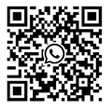Three phase multi-function electronic energy meters are devices used to measure and monitor the consumption of electrical energy in three-phase electrical systems. They typically provide information on parameters such as voltage, current, power, energy, frequency, and power factor. The multi-function aspect of these meters allows for the measurement and monitoring of various aspects of the electrical system in a single device, improving accuracy and convenience.
1.Accurate measurement: Three phase multi-function electronic energy meters provide highly accurate measurements of energy consumption compared to traditional mechanical meters.
2.Remote reading and monitoring: These meters can be remotely monitored and read, eliminating the need for manual meter reading.
3.Improved billing efficiency: The accurate readings of electronic meters can help improve billing efficiency and reduce disputes over energy billing.
4.Data analysis and management: Electronic meters collect and store data that can be analyzed and managed to gain insights into energy consumption patterns and energy-saving opportunities.
5.Flexibility and scalability: Electronic meters can be easily scaled to accommodate changing energy needs and provide multiple functions beyond simple energy metering.
6.Energy theft prevention: Electronic meters can detect energy theft and tampering, improving energy security.
Choosing the right three-phase power meter can be a daunting task, especially if you are not familiar with the different types of meters available in the market. Here are some factors to consider when choosing the right three-phase power meter for your needs:
1. Accuracy: The accuracy of the meter is essential in ensuring that the power consumption of your three-phase system is measured correctly. Look for meters that offer high accuracy and precision in their readings.
2. Type of meter: There are various types of three-phase power meters available, including digital power meters, electromechanical power meters, and smart meters. Choose a meter that suits your specific needs and requirements.
3. Measuring capabilities: Some three-phase power meters can measure more than just the basic power parameters, such as voltage, current, and power factor. Look for meters that offer additional features, such as harmonic distortion analysis or power quality monitoring.
4. Communication capabilities: Some three-phase power meters come with communication capabilities, allowing you to remotely monitor and control your power consumption. Choose a meter that offers communication protocols that are compatible with your existing systems.
5. Installation and maintenance: Consider the ease of installation and maintenance when choosing a three-phase power meter. Look for meters that are easy to install and maintain to minimize downtime and reduce costs.
6. Brand reputation: Look for three-phase power meters from reputable brands with a proven track record of quality and reliability. Reading reviews and testimonials from other customers can help you gauge the quality of a particular brand or model.
In summary, choosing the right three-phase power meter requires careful consideration of accuracy, type of meter, measuring capabilities, communication capabilities, ease of installation and maintenance, price, and brand reputation. By taking these factors into account, you can find a three-phase power meter that meets your needs and helps you optimize your power consumption.
Three-phase power meters are widely used in various industries to monitor power consumption and optimize energy usage. Here are some common applications of three-phase power meters in different industries:
1. Industrial Manufacturing: Three-phase power meters are used to monitor the power consumption of industrial machinery and equipment. By measuring the power usage of each machine, operators can identify areas of high energy consumption and implement energy-saving measures to reduce costs.
2. Oil and Gas: Three-phase power meters are used to monitor the power consumption of oil and gas drilling operations. By measuring the power usage of drilling rigs, pumps, and other equipment, operators can optimize their energy usage and reduce costs.
3. Renewable Energy: Three-phase power meters are used to monitor the power output of renewable energy sources such as solar panels and wind turbines. By measuring the power output of these sources, operators can optimize their energy usage and ensure that their renewable energy systems are operating efficiently.
4. Data Centers: Three-phase power meters are used to monitor the power consumption of data centers. By measuring the power usage of servers, storage systems, and cooling equipment, operators can optimize their energy usage and reduce costs.
5. Healthcare: Three-phase power meters are used to monitor the power consumption of hospitals and medical facilities. By measuring the power usage of medical equipment, lighting, and HVAC systems, operators can optimize their energy usage and reduce costs.
6. Commercial Buildings: Three-phase power meters are used to monitor the power consumption of commercial buildings such as offices, retail stores, and hotels. By measuring the power usage of lighting, HVAC systems, and other equipment, operators can optimize their energy usage and reduce costs.
7. Transportation: Three-phase power meters are used to monitor the power consumption of electric vehicles and charging stations. By measuring the power usage of these systems, operators can optimize their energy usage and reduce costs.
In summary, three-phase power meters have numerous applications in various industries, including industrial manufacturing, oil and gas, renewable energy, data centers, healthcare, commercial buildings, and transportation. By monitoring power consumption and optimizing energy usage, operators can reduce costs, improve efficiency, and promote sustainability.


 English
English 中文简体
中文简体

.png?imageView2/2/w/500/h/500/format/png/q/100)
.png?imageView2/2/w/500/h/500/format/png/q/100)

.jpg?imageView2/2/w/500/h/500/format/png/q/100)











